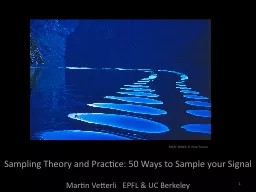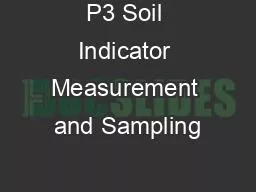PPT-Sampling Theory and Practice: 50 Ways to Sample your Signal
Author : alexa-scheidler | Published Date : 2016-09-08
Martin Vetterli EPFL amp UC Berkeley BOAT WAKE Pete Turner 1 Acknowledgements Sponsors and supporters NSF Switzerland thank you Conference organizers Akihiko
Presentation Embed Code
Download Presentation
Download Presentation The PPT/PDF document "Sampling Theory and Practice: 50 Ways to..." is the property of its rightful owner. Permission is granted to download and print the materials on this website for personal, non-commercial use only, and to display it on your personal computer provided you do not modify the materials and that you retain all copyright notices contained in the materials. By downloading content from our website, you accept the terms of this agreement.
Sampling Theory and Practice: 50 Ways to Sample your Signal: Transcript
Download Rules Of Document
"Sampling Theory and Practice: 50 Ways to Sample your Signal"The content belongs to its owner. You may download and print it for personal use, without modification, and keep all copyright notices. By downloading, you agree to these terms.
Related Documents














